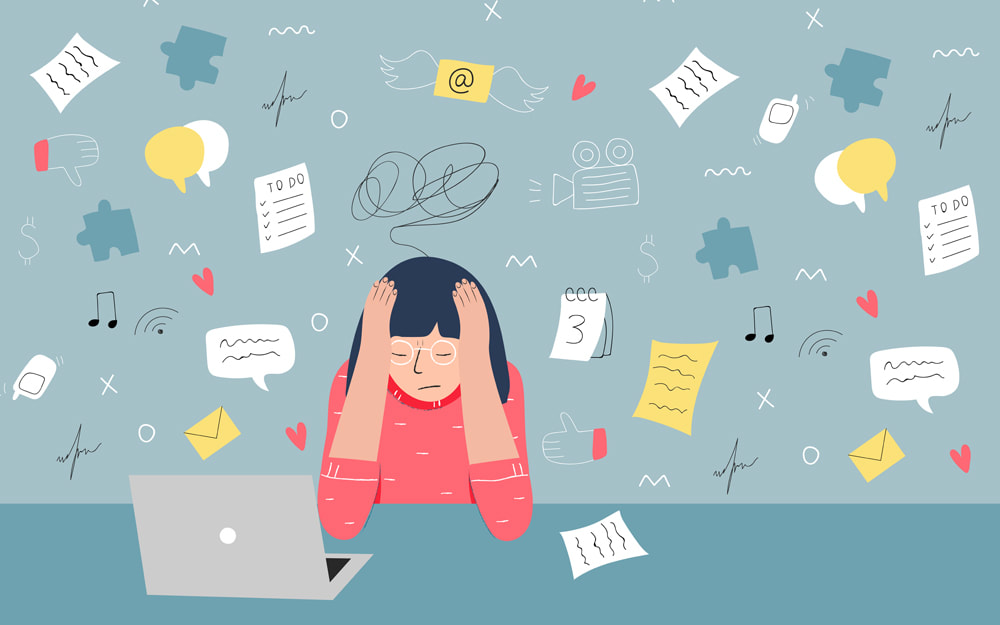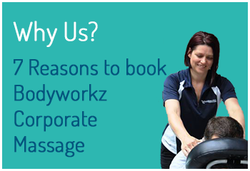Why Zoom fatigue happens:
Your environment A good portion of the time we Zooming from our home environment. Which means that you might not be in your ideal ‘work’ environment. Some of you might be lucky to have a great home office set up, but plenty of us are perched at the kitchen table, squashed into a small corner of the bedroom or even out in the garage! You are also much more likely to have other distractions from your family, flatmates or kids in the background. Not to mention a certain level of anxiety about what’s happening with this global pandemic that got so many of us into this new way of working in the first place. Some of these factors can be managed or improved, but it is important to acknowledge these environmental aspects all have an impact on our overall level of comfort, tension and ability to concentrate before we even turn our computer on! Self-view Zoom adds an extra layer of weirdness to the online experience because having your video broadcast out there heightens your awareness of being seen and appearing “on”. This vigilance and self-monitoring can be exhausting. With having a video call we assume that everyone is paying attention to every move we make. But of course, this isn’t really true. Everyone else on the call is probably also worried about their own self-view (and wondering is what my neck really looks like?!). Of course, you can simply turn your camera off so you can’t see yourself or change the view to speaker view (assuming someone else is doing most of the talking). This can be quite liberating. However I also found it a little anxiety inducing. Without being able to see myself, I couldn’t monitor whether my expression still read “interested” or how many times I did things like touch my face without realizing. I also found I wasn’t as engaged in the meeting and tended to start multi-tasking. Staying Still When we have the camera on we tend to keep our heads in the middle of the screen and sit in one position for a long period of time. This fixed posture and gaze also add more tension and strain to our usual sitting posture. When I’m on a Zoom call, I notice that I stay VERY still with a wide fixed stare. Almost like a possum caught in headlights. It doesn’t help that my laptop is old and the camera blurs with any movement from my end. This means I also often cross my arms to curb my tendency to wave them around. And I’ve observed similar posture and fixed gazes in others on my Zoom calls. The good news is that there are some things you can do to avoid Zoom fatigue and improve your posture during Zoom meetings, whether the camera is on or camera off. Here’s my top 5 solutions for avoiding Zoom Fatigue:
1 Comment
To say that 2020 has changed the world and brought some challenging times is somewhat of an understatement!
Almost every business owner and employee has had to rapidly adapt to working in different ways and from different places. In fact, Covid19 may have transformed the way businesses work indefinitely, with a massive increase in flexible and remote working opportunities. While we are all doing our best, change and uncertainty are draining, and it is vital to take steps to manage stress. Here are three of the best ways for you to do just that.... 1. Reconnect with FUN When was the last time you did something purely just for fun? And no, zoning out in front of Netflix or mindlessly scrolling social media does not count! You are not alone!
The World Health Organization called job stress a World Wide Epidemic. Stress in the work place is one of the most common areas of stress in our lives. Even if we love our jobs, stress is an inevitable part of day-to-day performance and impacts both employers and employees alike. Everyone is susceptible because stress is an individual’s perception of the load they carry, no matter your role in your workplace. Stress is good like that, in that it doesn’t discriminate. And the stress isn’t just physiological, it is physical as well. Hours spent in front of a computer screen starts playing havoc with your posture. Muscles starts to fatigue and causing pain, which is the nervous system reacting to the way you sit. Trigger points (taught band of muscle that can refer pain to various parts of the body) starts to form, headaches become more frequent and intense and pain starts to spread to different areas of the body. In New Zealand, OSH (Occupational Health and Safety) defines workplace stress as: The result of the interaction between a person and their work environment. According to research, one-third of workers report high levels of stress, and one quarter regards their job as the number one factor of stress in their lives. Finances is a constant worry, office politics is another as is the actual workload along with constant deadlines. According to a survey by Bill Wilkerson (CEO of the Global Business and Economics Roundtable on Addiction and Mental Health) the Number One stressor in the workplace is: Lack of Control – having no control over the participation or the outcome of the work. Stress in the workplace is costly as well... |
Susy Egneus -
Founder of Bodyworkz, sharing thoughts, facts and ideas about living a stress free life, and what mobile chair massage is all about! Categories
All
Archives
December 2021
|
Subscribe to our newsletter for info, specials and general updates |
Quick Links
|
Contact UsFREECALL 0800 263996 |
|
Bodyworkz proudly supports the New Zealand Massage Association (MNZ) and follow their Code of Ethics.
© Bodyworkz Corporate Massage Ltd 2011 - 2023. Website developed by Outbox Ltd |








 RSS Feed
RSS Feed

